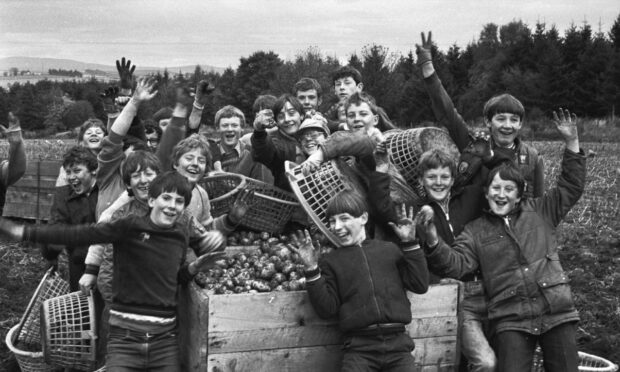These days, the tattie holidays are a welcome couple of weeks off school, but for north-east schoolchildren in the past it meant hard labour during the potato harvest.
In the days before machinery, tattie howking by hand was tiresome and back-breaking work – and children were cheap labour.
Many will have happy memories of being out in the fields of Aberdeenshire picking tatties in the autumn sun and capering with their classmates.
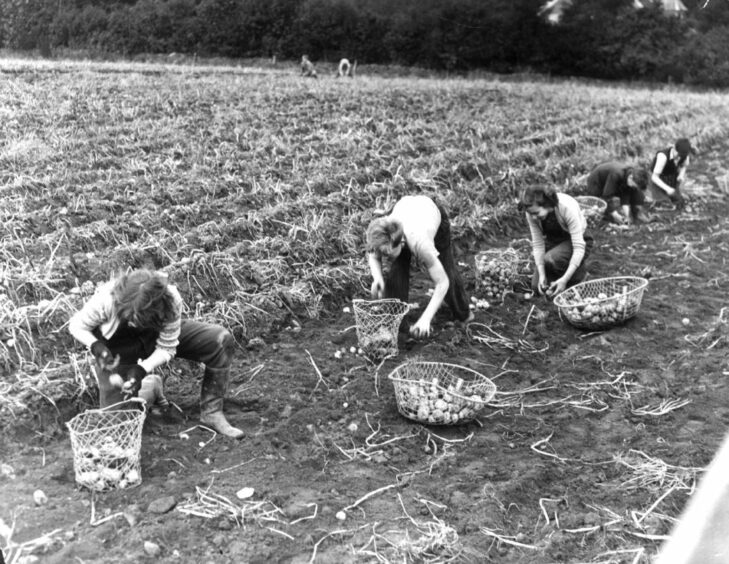
Others will remember perishing October days where the ground was frozen solid, the wind was bitterly cold and hands would be sore.
Join us on a step back in time as we take a look at the tattie holidays of bygone decades.
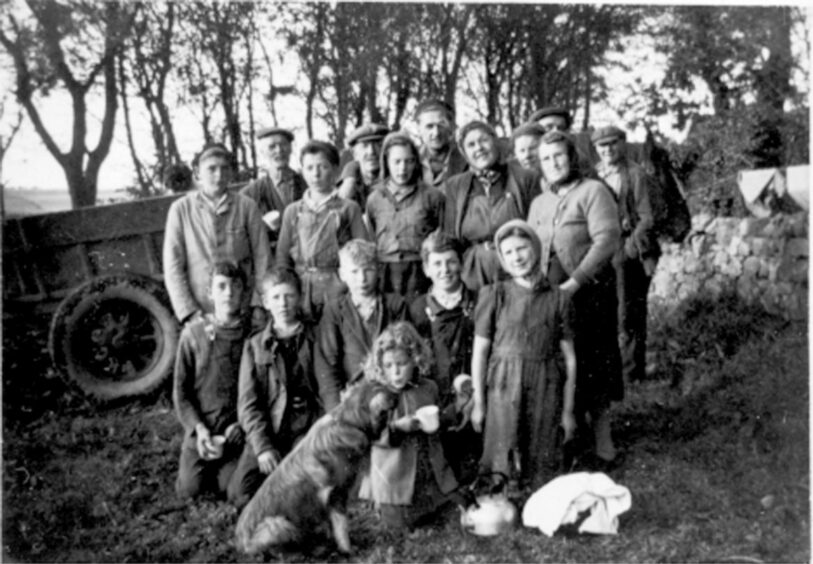
Children first took to the tattie fields in the 1930s, afforded a week or two off school to help out with the harvest.
This photo from above shows adults and youngsters alike enjoying a fly cup during a break in the hairst at Auchenhuive at Whiterashes near Inverurie in 1948.
While the pupils might have enjoyed earning extra pocket money in the great outdoors, Aberdeen headteachers were less enthused.
In 1949, the Aberdeen Education Board announced that city children would not be spared for that year’s harvest, because of the interference it was having with pupils’ education.
Head teachers condemned the scheme because it gave youngsters “a foretaste of earning power and independence, and had a very unsettling effect on classes”.
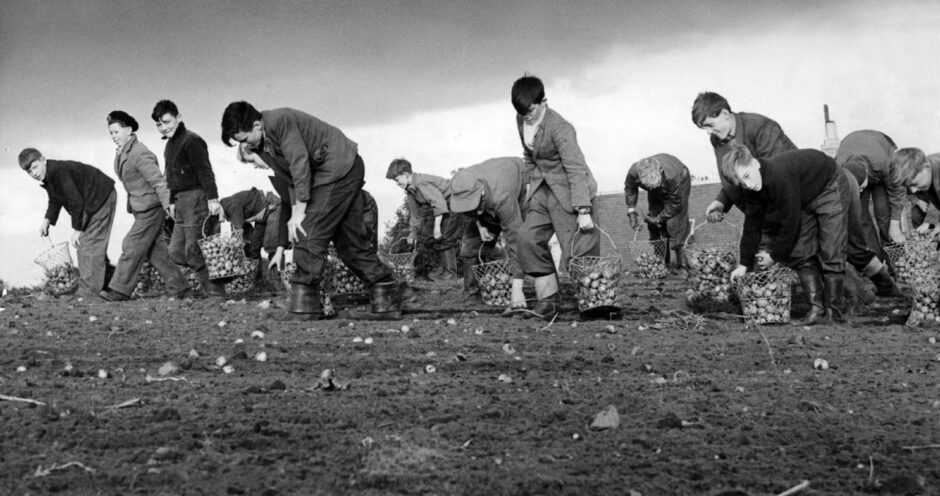
The tradition of tattie-howking, however, continued for pupils living in Aberdeenshire.
The photo above shows youngsters from Stonehaven and Laurencekirk hard at work filling up their baskets of tatties in October 1953.
This hardy squad spent a large portion of their holidays out in the Mearns earning up to a £1 a day for their efforts.
By 1968, the rate was around £2 a day for youngsters, increasing to around £3 a day in the 1970s.
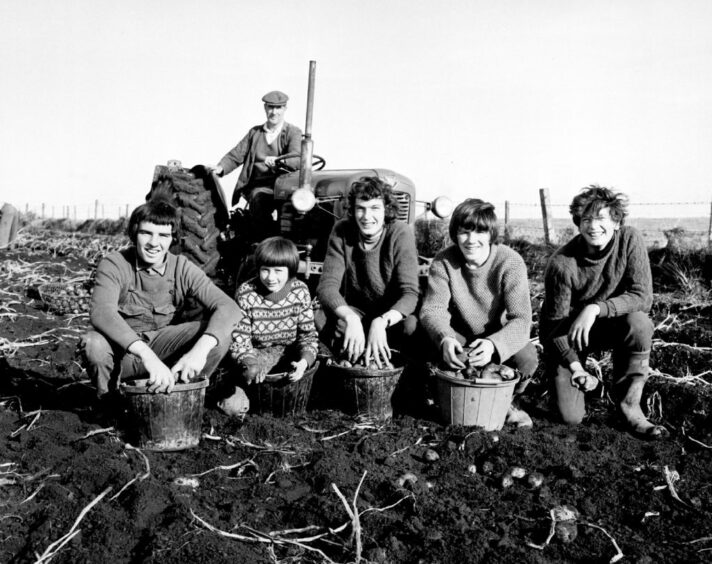
These happy tattie howkers at Turriff took a well-earned break from the labour of picking potatoes in 1973.
Conditions for children could be hard; often they were expected to work eight-hour days, in all weather conditions.
They would be collected and piled onto the back of farm lorries, and shown to their patch by a usually no-nonsense farmer.
Sticks and string would mark out the area where children would collect tatties once the digger had ploughed by.
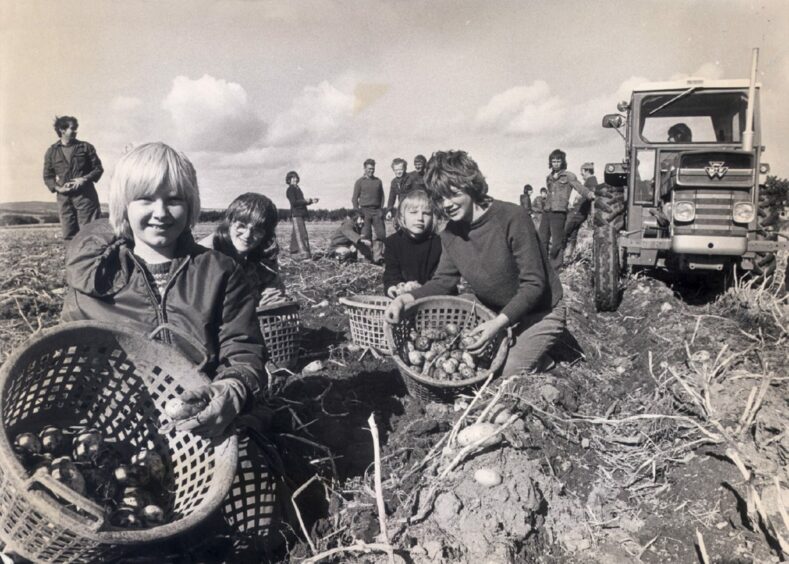
These youngsters were still smiling despite the toil, Susan Thomson, Audrey Morrison, Julie Buchan and Pamela Thomson were all helping out over the Aberdeen holiday weekend.
The children, who hailed from Northfield, enjoyed a day’s work in the sun at the nearby Bucksburn Farm to earn some extra pocket money in 1975.
Attitudes had long changed by the 70s, and few children were released from school for tattie howking.
By then, the October holidays were a break in the school term for everyone.
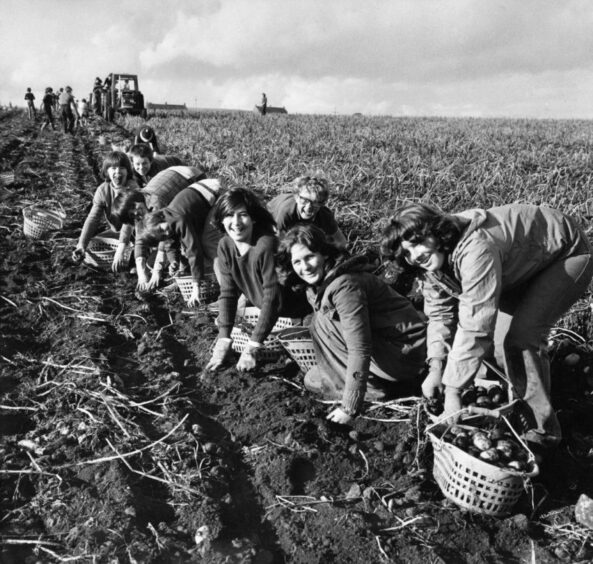
But even into the 1970s and 80s, when technological advances revolutionised farming, a lot of potato picking was done by hand.
The schoolchildren above were given their October holiday a week early in October 1976 to help address a shortage in the potato picking workforce in the Mearns.
They were part of an 80-strong group of pupils from Laurencekirk and Stonehaven employed that year by potato merchant Clarence Murray at Midtown of Barras near Stonehaven.
Their labour was in such demand that those working a full day from 7.30am to 4.30am could rake in £6.50 per shift.
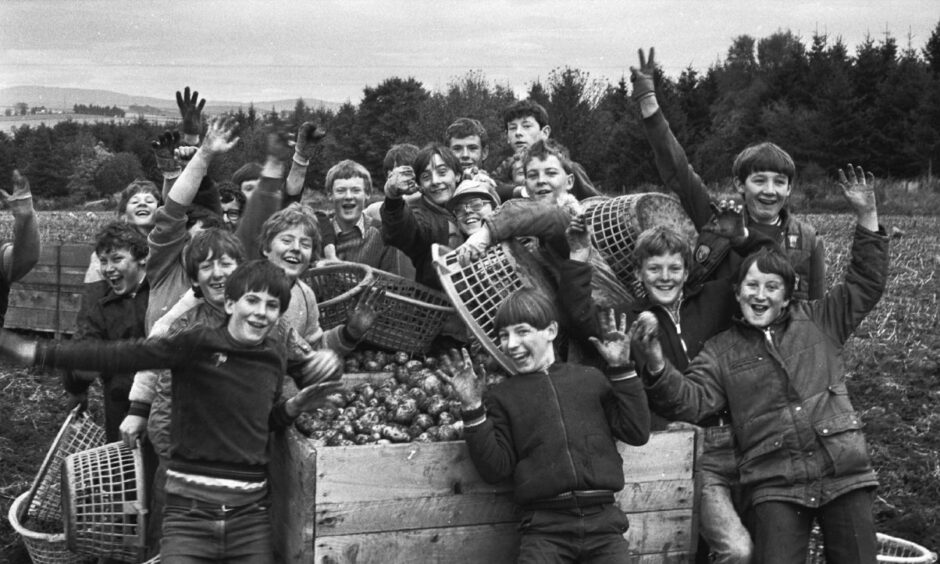
It was spuds galore at West Fornet Farm, Lyne of Skene, near Kintore in the tattie holidays in 1986.
The north-east was basking in a late Indian summer making picking conditions ideal that year – and these cheery local schoolboys certainly enjoyed the opportunity to make some extra cash.
Farmer David Brownie had more than 100 pickers at work that year to harvest his bumper crop.
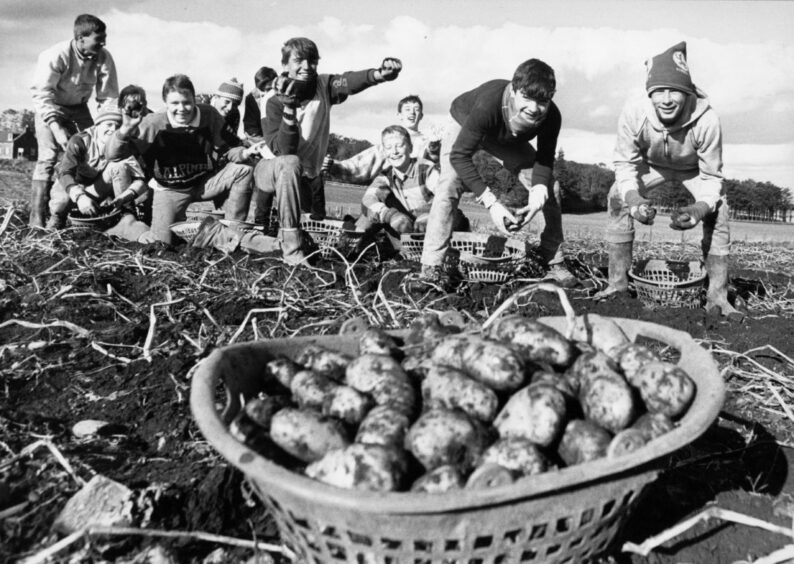
Keeping the tradition of tattie howking alive in 1988 were these pupils from Inverbervie who were helping out at John Smith’s farm at Slains Park, Kinneff.
Tattie howking was no longer enforced upon children, but many in rural areas still continued to take to the fields to earn a little extra pocket money.
Schoolboys James Chassar, John Forbes, Barry Fotheringham, Terry Fotheringham, Lee Jamieson, Kevin Kemlo, Andrew Kemp, Colin Milne, Andy Munro, James Munro, and Phillip Young enjoyed earning in the fresh air.
Pupils still enjoy the fortnight off for the tattie holidays, maybe enjoying trips abroad or outings with family.
A world away from the sweat and slog of their contemporaries in decades gone by.
If you enjoyed this, you might like:
